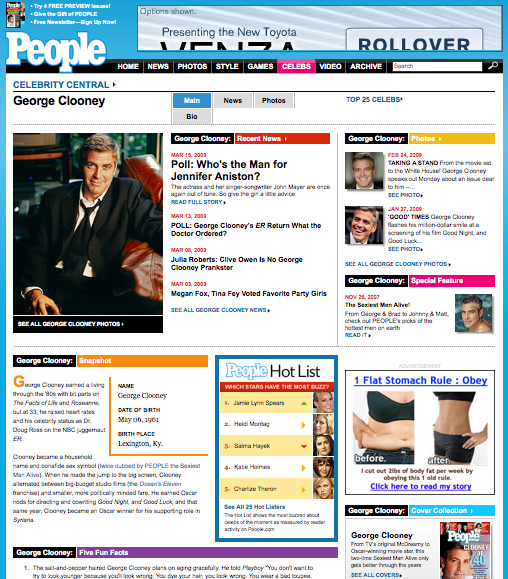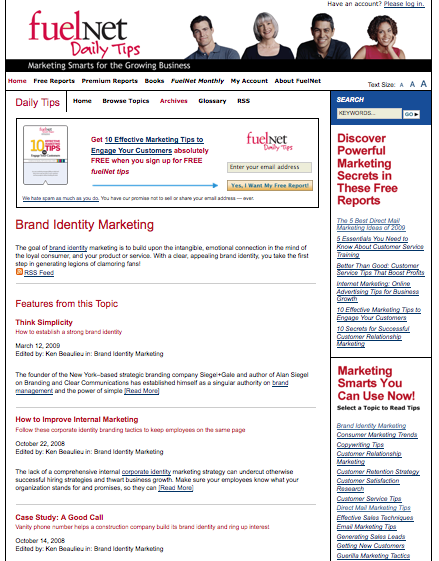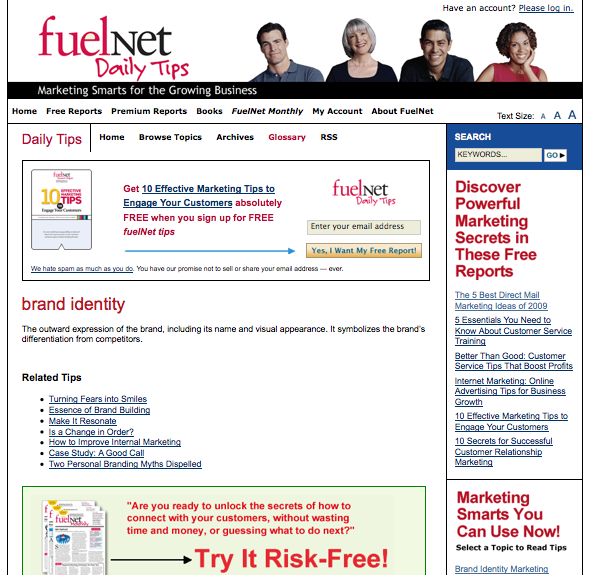Tag landing pages help you organize your content for better SEO
A tag landing page lists all the content a site has about a particular tag, or keyword. The literal translation of a tag page is a page about other pages. The difference between a tag landing page and a topic landing page, is that a tag page doesn’t necessarily get elevated to the navigation level.
For example, People.com writes about celebrities. Almost every celebrity has their own tag page, where all the content that People.com has ever written about said celebrity would show up. But each celebrity wouldn’t get position in a site’s navigation.
Here is a tag page from People.com on “George Clooney“:
[text_ad]
Classic vs Glossary Tag Landing Pages
FuelNet uses two versions of tag landing pages. The first is the classic tag landing page and the second is a tag glossary landing page.
Classic tag pages: This page includes standard information (see below), such as snippets of articles, like the one they have for “brand identity marketing“.
Glossary tag pages: This page includes a glossary definition provided by the site’s editors, then is followed up by related posts. “Brand identity” is an example of their glossary tag page.
Here is a tag landing page from fuelNet.com on “brand identity marketing”:
Here is a tag glossary page from fuelNet.com on “brand identity”:
Key elements a tag landing page should include:
- Definition (if a term)
- Bio (if a person)
- Any articles or posts using the tag
- Any videos, podcasts, or other media using the tag
- Related product/sponsor ads
- Photo gallery (if relevant)
- Most popular stories (if content is evergreen)
- Most recent stories (if content is news-based)
Tag landing pages are so effective at driving website traffic due to the sheer amount of content and inbound links they amass. This makes them more likely to rank higher on search engines. Move “build tag landing pages” to the top of your to-do list as an important component of landing page guidelines, and let them work for you.





